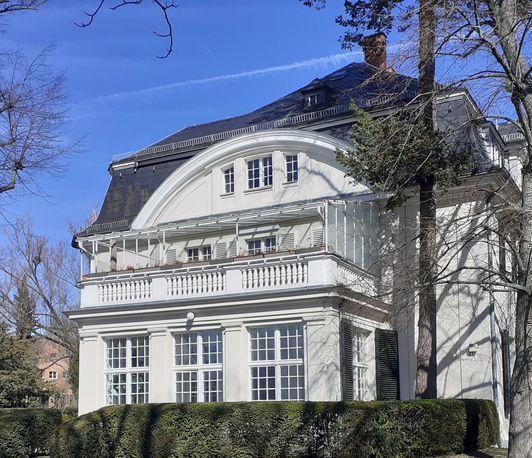2D Silicates from Ultimate Membranes to Robust Ferromagnets
- Special MP Department Seminar
- Date: Jun 28, 2023
- Time: 09:30 AM c.t. - 10:30 AM (Local Time Germany)
- Speaker: Prof. Eric I. Altman
- Department of Chemical & Environmental Engineering, Yale University, New Haven, USA, see https://seas.yale.edu/faculty-research/faculty-directory/eric-altman
- Location: Haber Villa
- Room: Seminar Room
- Host: Department of Molecular Physics
- Contact: freund@fhi-berlin.mpg.de

Silica deposited onto late transition metal surfaces spontaneously forms a 2D van der Waals structure constructed of mirror image planes of rings of corner sharing SiO4 tetrahedra with crystalline and amorphous polymorphs possible. The silica can be deposited by an atomic layer deposition (ALD) process, opening the door to applications. Interestingly, when the silica is deposited by ALD on Au(111) only the amorphous phase is seen while using SiO as the silica precursor produces only the crystalline form on the same substrate. We have isolated ALD-grown amorphous layers from the growth substrate and tested their permeance towards noble gases and a range of organic molecules. Despite expectations based on size, He does not permeate the layer but water and organic molecules with substantial vapor pressures can. Theoretical and experimental analyses indicate that permeation does not occur ballistically but rather through an adsorption, diffusion, transmission mechanism; since He does not adsorb, it does not permeate. On the other hand, comparison of a series of straight chain and branched alcohols show that size- and shape-selective permeation is possible. Transition metal (TM) silicates with a layer of corner-sharing SiO4 tetrahedra atop an octahedrally-coordinated TM oxide layer can also be readily prepared by depositing the TM plus Si on a late TM surface and heating in oxygen; first row TM cations spanning Ti to Ni are possible. The layers break inversion symmetry making them piezoelectric and the inclusion of magnetic cations creates opportunities for magnetic phases that respond to strain and electrostatic fields. We have studied the magnetic order in single layers of these materials theoretically and experimentally. Scanning tunneling and low energy electron microscopies reveal well-ordered layers that completely cover the surface and remain intact after extended storage in ambient conditions. X-ray magnetic circular dichroism (XMCD) measurements reveal that single layer Cr silicate on Pt(111) is ferromagnetically ordered up to at least 80 K. Experiment and theory indicate that Cr is nominally 3+ but electron deficient compared to typical Cr3+ compounds. Theoretical analysis reveals that this electron deficiency enhances ferromagnetic ordering while tying it to inefficient screening by the Pt substrate. This finding highlights the potential to control the magnetic order by doping and/or electrostatic gating. Meanwhile, XMCD measurements revealed ferromagnetic ordering in single layer Fe silicate up to room temperature on both Au and Pd(111). In this case, spectroscopic characterization reveals mixed valence Fe and suggests that the presence of Fe2+ is essential to the observed room temperature ferromagnetism. To stabilize the Fe2+ state, we have also investigated mixed Cr2FeSi2Ox layers. As a first step towards releasing the layers from the growth substrate, we have studied reactions of the layers with water and hydrogen using ambient pressure x-ray photoelectron and reflection absorption infrared spectroscopies.